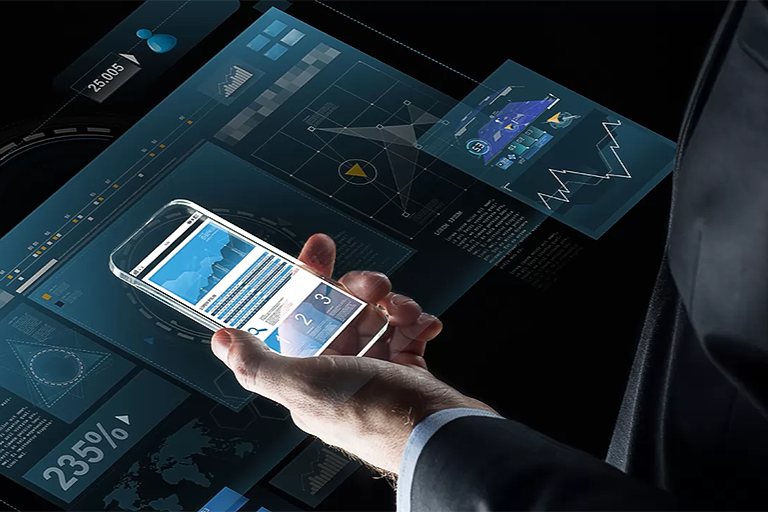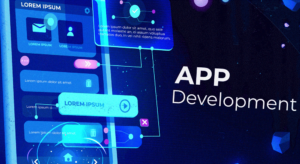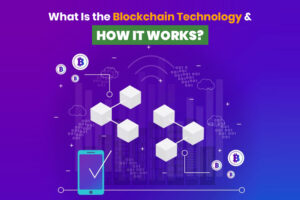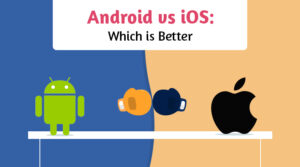According to research, around 179 billion mobile applications are downloaded every year. This means that mobile app development companies around the globe are coming up with innovative mobile apps which have led to increased growth of this sector. However, the mobile app industry is perhaps dominated by social media apps (Facebook, Instagram, and Twitter), Google Apps (Gmail, YouTube, Search and Maps), and gaming apps (Temple Run and Angry Birds).
Business giants like Amazon and Walmart are using mobile applications for improving their customer engagement, branding, direct marketing, etc. Moreover, small to midsize businesses have also started to follow mobile trends to better reach and engage with their customers. However, in this time and age, an effective mobile strategy from one of the leading mobile app development companies would definitely involve more than just building your mobile responsive website. The mobile app development process is more technology-driven and involves rich features that require businesses to have a detailed plan and vision for the next couple of years.
Here are some of the mobile application development trends that are most likely to define the future of this progressively spreading market.
Wearable Devices
According to data from the International Data Corporation (IDC), the global shipment of wearable devices has reached 49.6 million units within the first quarter of 2019, which is 55.2% more than the previous year. Smart wearable devices like Apple Watch and Microsoft’s Hololens are leading the market with an upcoming change in computing and the shift from basic to smart wearables. This means more opportunities for wearable and mobile app development companies, vendors and accessory makers.
Smartphones are already on the way to becoming the core of the personal network that consists of wearable devices like on-body healthcare sensors, smartwatches, smart jewelry, display devices such as Google Glass, and a range of sensor embedded retail items like clothes and shoes. These intelligent gadgets will communicate with mobile apps and provide information in new ways. This will also lead to a wide range of new products and services in industries like fitness, sports, fashion, entertainment, and healthcare. Hence, wearable devices along with smartphones will set trends for the next generation of mobile app development.
Artificial Intelligence (AI)
Up until a while back, it was mostly large enterprise who could afford to build mobile apps with the integration of artificial intelligence. However, this has changed in the last few years.
Along this time, mobile app development companies have explored the broad scope of AI. It can be implemented in a range of different industries, from the markets that would prefer more personal experience for users to the financial industry for money transfer, verbal instructions and virtual assistants.
Moreover, a subfield of artificial intelligence, machine learning is also the future of mobile app development. Netflix is one of the most popular examples of using machine learning, it uses algorithms that adapt to users’ behavior and offer more personalized content options. Tinder is another big-name that uses machine learning to help increase the chances of users of finding a match. Furthermore, all thanks to machine learning Google Maps is working on making the process of choosing a parking spot easier for users. These user-facing apps show that machine learning can really help provide next-level personalized experienced via consumer apps.
Internet of Things (IoT)
Experts predict significant changes in the IoT domain, such as by the year 2020, there will be more than 26 billion IoT associated gadgets. To help you better understand the impact of IoT, it will be accurate to say that everything that we use or have heard of with a prefix ‘smart’ can be linked to IoT.
However, the numbers and statistics regarding IoT’s worth may vary, but the trend remains the same – IoT has immensely grown over the years and it continues to grow. More and more mobile app development companies are taking interest in IoT and developing custom IoT applications, devices, web apps and sensors for both B2B and B2C end-users.
There are hundreds of IoT connected devices that are being popularly used around the world including LED light bulbs, a range of domestic appliances, medical devices, sports equipment, and controllable power sockets, etc. The domestic smart objects linked through an app, have been revolutionary for the overall living experience and home care. The app on a smartphone or tablet will work as a remote control, showing and analyzing information. These apps also have options like to monitor actions through social networks, pay for subscription services, update device’s firmware, order replacement consumables, and more.
Innovative Mobile UX Design
Along with the functionality of the device, effective display of data and information on the connected app is also important for comprehensive user experience. Instagram, Pinterest, and Wunderlist are few mobile applications that have integrated new patterns, intuitive designs, and smart interfaces. Many contemporary app designers are also accommodating mobile challenges, like partial user attention and technical interruptions to improve user experience.
This is the perfect time for mobile app developers to exploit the advanced technologies for innovative features like circular design pattern and interactive content layers. These app features help create an augmented reality by enabling the users to engage with the content, manipulate the content and add further detail into it. The leading consumer apps that are using these technologies are setting the standards high for user interface and experience. Hence, mobile app development companies must master these new skills to meet growing user expectations.
M-commerce
Most experts believe that progressive trends in mobile purchases will continue over the years to come and with time more and more consumers will turn to m-commerce. The increasing use of Apple Pay and Google Wallet shows that people are interested in making purchases using their mobile phones instead of the usual debit or credit cards.
This means that you need to hire mobile app developers who can create a mobile app that can facilitate m-commerce and enable transactions without needing cash or debit and credit cards. Along with wearable technology, M-commerce has the potential to take a completely different shape and be disruptive. Wearable technology will also be crucial in the future of mobile payments and customer loyalty, going beyond data collection and predictive analytics.
Final Thought
Since the last few years, no one can deny that we have started to rely on mobile apps and they have become an essential part of the digital ecosystem. The technologies are becoming more advanced and the innovative mobile app development companies building disruptive consumer apps are in greater demand than ever before. Businesses globally should keep an eye on the trends for impactful mobile app development strategies.
Asim Co-founder and CTO of Tekrevol LLC mobile app development company, and has over a decade’s worth of hands-on experience in development and enterprise digitalization.









